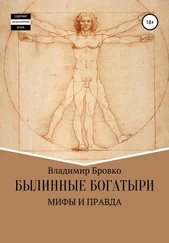39 Brooks, A. W., Huang, L. Kearney, S. W., & Murray, F. E. (2014). Investors prefer entrepreneurial ventures pitched by attractive men // Proceedings of the National Academy of Sciences, 111 (12), 4427–4431.
40 Gupta, V. K., Goktan, A. B., & Gunay, G. (2014). Gender differences in evaluation of new business opportunity: A sterotype threat perspective // Journal of Business Venturing, 29, 273–288.
41 Gupta, V. K., Turban, D. B., Wasti, S. A., & Sikdar, A. (2009). The role of gender stereotypes in perceptions of entrepreneurs and intentions to become an entrepreneur // Entrepreneurship Theory and Practice, 33 (2), 397–417.
42 Lemaster, P., & Strough, J. (2014). Beyond Mars and Venus: Understanding gender differences in financial risk tolerance // Journal of Economic Psychology, 42, 148–160; Meier-Pesti, K., & Penz, E. (2008). Sex or gender? Expanding the sex-based view by introducing masculinity and femininity as predictors of financial risk taking // Journal of Economic Psychology, 29 (2), 180–196.
43 Twenge, J. (1997). Changes in masculine and feminine traits over time: A meta-analysis // Sex Roles, 36 (5–6), 305–325.
44 Meier-Pesti & Penz (2008), там же. Стимул-напоминание о маскулинности и феминности в этом исследовании представлял собой картинку либо мужчины в деловом костюме, либо женщины с ребенком (или, в контрольном условии, гендерно-нейтральную картинку), а затем участников просили написать об этой сценке и дописать неоконченные предложения по теме.
45 Reinhard, M.-A., Stahlberg, D., & Messner, M. (2008). Failure as an asset for high-status persons: Relative group performance and attributed occupational success // Journal of Experimental Social Psychology, 44 (3), 501–518; Reinhard, M.-A., Stahlberg, D., & Messner, M. (2009). When failing feels good: Relative prototypicality for a high-status group can counteract ego-threat after individual failure //Journal of Experimental Social Psychology, 45 (4), 788–795.
46 Reinhard, M.-A., Schindler, S., & Stahlberg, D. (2013). The risk of male success and failure: How performance outcomes along with a high-status identity affect gender identification, risk behavior, and self-esteem // Group Processes and Intergroup Relations, 17 (2), 200–220.
47 Weaver, J. R., Vandello, J. A., & Bosson, J. K. (2013). Intrepid, imprudent, or impetuous? The effects of gender threats on men’s financial decisions // Psychology of Men and Masculinity, 14 (2), 184–191. Для сравнения участников просили протестировать электродрель.
48 В этом втором эксперименте использовалась недооценка отсроченного вознаграждения как зависимая переменная и было обнаружено более импульсивное поведение в условиях угрозы маскулинности.
49 Nelson, J. A. (2014). Are women really more risk-averse than men? A re-analysis of the literature using expanded methods // Journal of Economic Surveys, 29 (3), 566–585. Цит. на с. 576.
50 Beckmann, D., & Menkhoff, L. (2008). Will women be women? Analyzing the gender difference among financial experts // Kyklos, 61 (3), 364–384.
51 Nelson (2014), там же. Цит. на с. 225.
52 Honekopp, J., & Watson, S. (2010). Meta-analysis of digit ratio 2D:4D shows greater sex difference in the right hand //American Journal of Human Biology, 22, 619–630.
53 Voracek, M., Tran, U. S., & Dressler, S. G. (2010). Digit ratio (2D:4D) and sensation seeking: New data and metaanalysis // Personality and Individual Differences, 48 (1), 72–77. Цит. на с. 76.
54 Herbert (2015), там же. Цит. на с. 52.
55 Honekopp, J., & Watson, S. (2011). Meta-analysis of the relationship between digit-ratio 2D:4D and aggression //Personality and Individual Differences, 51 (4), 381–386. Небольшая корреляция была обнаружена только для мужчин (r = –0,08 для левой руки r = –0,07 для правой руки), но она была снижена до незначимой корреляции r = –0,03 после коррекции для предвзятости публикации.
56 Voracek et al. (2010), там же. Авторы, заметив, что в основе поиска ощущений лежит сложная биологическая система, а также на него влияет множество психосоциальных факторов, пишут: “Учитывая все, что нам известно, неудивительно, что довольно упрощенческие подходы, например, исследования, применяющие 2D:4D (гипотетический, еще не достаточно валидизированный маркер пренатального тестостерона), оказываются бесплодными”. Цит. на с. 76.
57 Vermeersch, H., T’Sjoen, G., Kaufman, J. M., & Vincke, J. (2008). 2D:4D, sex steroid hormones and human psychological sex differences // Hormones and Behavior, 54 (2), 340–346.
58 Apicella, C., Carre, J., & Dreber, A. (2015). Testosterone and economic risk taking: A review // Adaptive Human Behavior and Physiology, 1 (3), 358–385. Цит. на с. 369. Заметьте, что определение рискованного поведения в этой статье взято из экономики, то есть оно подразумевает задачи на лотерею и азартные игры. Однако следующий обзор тех же авторов по корреляциям индекса 2D:4D со “связанными с риском конструктами” обнаружил еще больше несоответствий.
59 Соответственно, Apicella, C. L., Dreber, A., Campbell, B., Gray, P. B., Hoffman, M., & Little, A. C. (2008). Testosterone and financial risk preferences // Evolution and Human Behavior, 29 (6), 384–390; Stanton, S. J., Mullette-Gillman, O. D. A., McLaurin, R. E., Kuhn, C. M., LaBar, K. S., Platt, M. L., et al. (2011). Low– and high-testosterone individuals exhibit decreased aversion to economic risk // Psychological Science, 22 (4), 447–453; Sapienza, P., Zingales, L., & Maestripieri, D. (2009). Gender differences in financial risk aversion and career choices are affected by testosterone // Proceedings of the National Academy of Sciences of the United States of America, 106 (36), 15268–15273; Schipper, B. C. (2014). Sex hormones and choice under risk. Working Papers, University of California, Department of Economics, No. 12, 7. Doi, H., Nishitani, S., & Shinohara, K. (2015). Sex difference in the relationship between salivary testosterone and inter-temporal choice // Hormones and Behavior, 69, 50–58.
60 Stanton, S. J., Liening, S. H., & Schultheiss, O. C. (2011). Testosterone is positively associated with risk taking in the Iowa Gambling Task // Hormones and Behavior,
59 (2), 252–256; Mehta, P. H., Welker, K. M., Zilioli, S., & Carre, J. M. (2015). Testosterone and cortisol jointly modulate risk-taking // Psychoneuroendocrinology, 56, 88–99.
61 Cueva, C., Roberts, R. E., Spencer, T., Rani, N., Tempest, M., Tobler, P. N., et al. (2015). Cortisol and testosterone increase financial risk taking and may destabilize markets // Scientific Reports, 5, 11206.
62 White, R. E., Thornhill, S., & Hampson, E. (2006). Entrepreneurs and evolutionary biology: The relationship between testosterone and new venture creation // Organizational Behavior and Human Decision Processes, 100 (1), 21–34.
Читать дальше
Конец ознакомительного отрывка
Купить книгу












